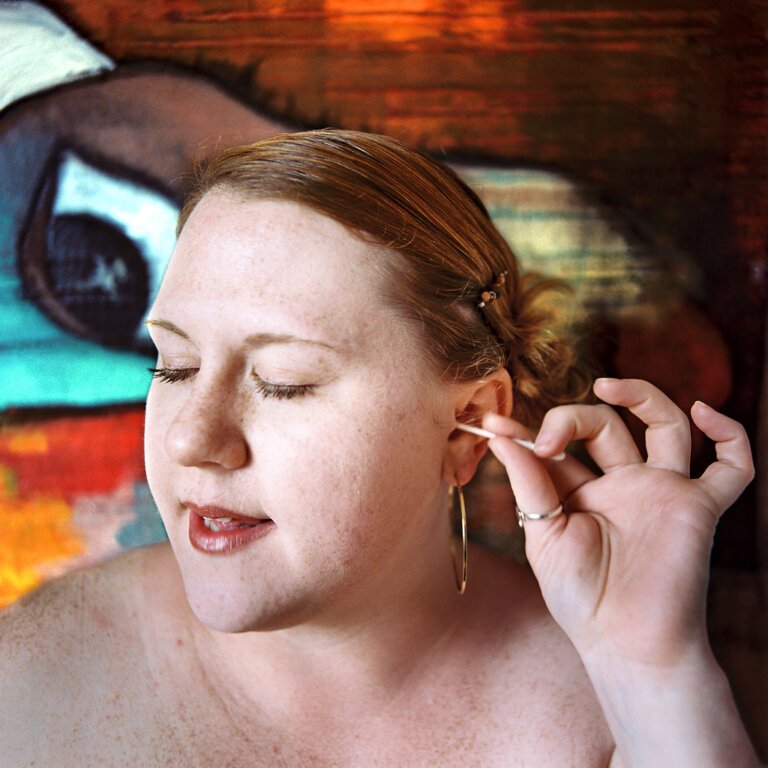From Diagnosis to Relief: Understanding Treatment Options for Ear Troubles
The human ear is a complex and delicate organ responsible for our sense of hearing and balance. It plays a crucial role in our everyday lives, allowing us to communicate, perceive our surroundings, and enjoy the sounds of the world. However, various issues can arise that cause discomfort and disrupt these essential functions. Understanding the different treatment options available for ear troubles is crucial for finding relief and restoring optimal ear health. In this article, we will explore the diagnosis and treatment options for common ear problems, including infections, wax buildup, and hearing loss.
Diagnosing Ear Troubles
Accurate diagnosis is essential to identify the specific cause of ear troubles and develop an effective treatment plan. Seeking professional medical advice from an otolaryngologist, also known as an ear, nose, and throat (ENT) specialist, is highly recommended. An ENT specialist has specialised knowledge and expertise in diagnosing and treating ear conditions. During a comprehensive examination, the specialist may use specific tools such as an otoscope to examine the ear canal, eardrum, and surrounding structures. This examination helps identify any visible abnormalities or signs of infection.
In some cases, additional diagnostic tests may be required to further evaluate the condition. A hearing test, also known as audiometry, may be conducted to assess the level and type of hearing loss, if present. This test helps determine the appropriate treatment approach, such as the use of hearing aids. Imaging studies, such as a CT scan or MRI, may be ordered to visualise the internal structures of the ear and identify any structural abnormalities or tumours.
Accurate diagnosis through a thorough examination and appropriate diagnostic tests is crucial for developing an effective treatment plan tailored to the specific needs of the individual.
Treatment Options for Ear Infections
Ear infections, also known as otitis media, are a common problem, particularly in children. They occur when bacteria or viruses enter the middle ear, causing inflammation and fluid buildup. The treatment options for ear infections may vary depending on the severity and cause of the infection. Here are some common approaches:
- Antibiotics: If the infection is caused by bacteria, antibiotics may be prescribed. These medications help eliminate the bacteria and reduce inflammation. It is important to complete the full course of antibiotics as prescribed by the healthcare provider to ensure complete eradication of the infection and prevent recurrence.
- Pain Relief: Ear infections can be quite painful, especially for young children. Over-the-counter pain relievers, such as paracetamol or ibuprofen, can help alleviate the pain and discomfort associated with ear infections. However, it is crucial to consult a healthcare professional before giving any medication to children to ensure the proper dosage and avoid potential side effects.
- Warm Compresses: Applying a warm compress to the affected ear can provide temporary relief from pain and help reduce inflammation. The warmth helps soothe the ear and promote healing. It is important to ensure that the compress is warm, not hot, to avoid burns.
- Observation: In some cases, particularly when the infection is mild or recurrent, a healthcare professional may adopt a wait-and-see approach. This involves closely monitoring the symptoms and providing supportive care, such as pain relief, while allowing the body’s immune system to fight off the infection naturally. This approach is often used for older children or adults with a strong immune system.
- Prevention: Taking preventive measures can help reduce the risk of ear infections. These measures include practicing good hygiene, such as frequent handwashing, avoiding exposure to cigarette smoke, and keeping up to date with vaccinations, especially the pneumococcal vaccine.
By following these treatment options and preventive measures, individuals can effectively manage and treat ear infections, promoting faster recovery and reducing the risk of complications.
Managing Wax Buildup
Excessive earwax, also known as cerumen, can lead to ear troubles such as hearing loss, earaches, or tinnitus. If the earwax buildup is causing discomfort or affecting hearing, several treatment options are available to safely remove the excess wax:
- Ear Drops: Over-the-counter ear drops can be used to soften the earwax, making it easier to remove. These drops typically contain a gentle wax-dissolving agent, such as hydrogen peroxide or mineral oil. It is essential to follow the instructions carefully and consult a healthcare professional if the symptoms persist or worsen.
- Ear Irrigation: For more stubborn or impacted earwax, a healthcare professional may perform ear irrigation, a procedure that involves flushing the ear canal with warm water or saline solution to remove the excess wax. This procedure should only be done by a trained professional to avoid potential complications, such as ear canal injury or perforation of the eardrum.
- Earwax Removal Kits: Earwax removal kits, available in pharmacies, typically consist of a bulb syringe or earwax removal drops and a bulb syringe. These kits can be used at home, following the instructions provided. However, caution is advised, as improper use can lead to injury or further impaction of the earwax. If unsure, it is best to consult a healthcare professional for proper guidance.
- Avoid cotton buds: Many people resort to using cotton buds to clean their ears, but this practice is not recommended. Cotton buds can push the earwax deeper into the ear canal, leading to impaction or injury. Additionally, inserting any objects into the ear can damage the delicate structures and increase the risk of infection.
By using these treatment options and adopting proper ear hygiene practices, individuals can effectively manage and prevent excessive earwax buildup, promoting optimal ear health and reducing the risk of associated complications.
Treatment Options for Hearing Loss
Hearing loss can significantly impact one’s quality of life, making it essential to explore appropriate treatment options. The appropriate treatment option will depend on the underlying cause and severity of the hearing loss. Here are some common treatment options:
- Hearing Aids: For individuals with mild to moderate hearing loss, hearing aids can significantly improve their ability to hear and communicate. These devices amplify sounds and are available in various styles and technologies to cater to individual needs. It is essential to consult an audiologist for a thorough evaluation and proper fitting of hearing aids. The audiologist will assess the type and degree of hearing loss and recommend the most suitable hearing aid for the individual.
- Cochlear Implants: In cases of severe or profound hearing loss, cochlear implants may be recommended. These surgically implanted devices bypass damaged portions of the ear and stimulate the auditory nerve directly. Cochlear implants are most effective for individuals with little to no residual hearing and can significantly improve their ability to understand speech and sounds.
- Assistive Listening Devices: Various assistive listening devices can enhance hearing abilities in specific situations, such as telephone conversations or public events. These devices include amplified telephones, FM systems, or captioned telephones. They work by reducing background noise and improving the clarity of sound, making it easier for individuals with hearing loss to understand speech or other sounds.
- Communication Strategies: Learning and implementing effective communication strategies can greatly improve the quality of life for individuals with hearing loss. Strategies such as lip-reading, sign language, or using visual cues can enhance communication skills and enable better interaction with others. Speech therapy or auditory training programs may also be beneficial in improving speech and language skills.
By considering these treatment options and working closely with healthcare professionals, individuals with hearing loss can find the most suitable approach to improve their hearing abilities and enhance their overall well-being.
Conclusion
Understanding the different treatment options for ear troubles is crucial for individuals seeking relief and optimal ear health. Whether it is an ear infection, wax buildup, or hearing loss, seeking professional medical advice is essential for an accurate diagnosis and appropriate treatment plan. It is important to remember that this article provides general information and should not replace personalized medical advice. If you or a loved one is experiencing ear troubles, it is always best to consult an ENT specialist for a proper evaluation and guidance towards the most suitable treatment option. By taking the necessary steps to address ear troubles, individuals can find relief, restore optimal ear health, and enjoy the world of sound to its fullest potential.
FAQ
1. Why is accurate diagnosis important for ear troubles?
Accurate diagnosis is important for ear troubles because it helps identify the specific cause of the issue and allows for the development of an effective treatment plan tailored to the individual’s needs.
2. What are the treatment options for ear infections?
The treatment options for ear infections include antibiotics for bacterial infections, pain relief medication, warm compresses for temporary relief, observation in mild or recurrent cases, and preventive measures such as good hygiene and vaccinations.
3. How can wax buildup be managed?
Excessive earwax can be managed through the use of ear drops to soften the wax, ear irrigation performed by a healthcare professional, earwax removal kits used at home with caution, and by avoiding the use of cotton buds.
4. What are the treatment options for hearing loss?
Treatment options for hearing loss include hearing aids for mild to moderate hearing loss, cochlear implants for severe or profound hearing loss, assistive listening devices for specific situations, and communication strategies such as lip-reading or sign language.







